YOU ARE LEARNING:
Probability and Algebraic Problems

Probability and Algebraic Problems
We can use probability tree diagrams to solve algebraic problems, and find probabilities of events happening.
Some probability problems involve algebra, and we can represent these problems using probability tree diagrams.
2 balls are picked at random from a bag
There are n total green and yellow balls. 3 of the balls are green. The ball is replaced after the first pick.
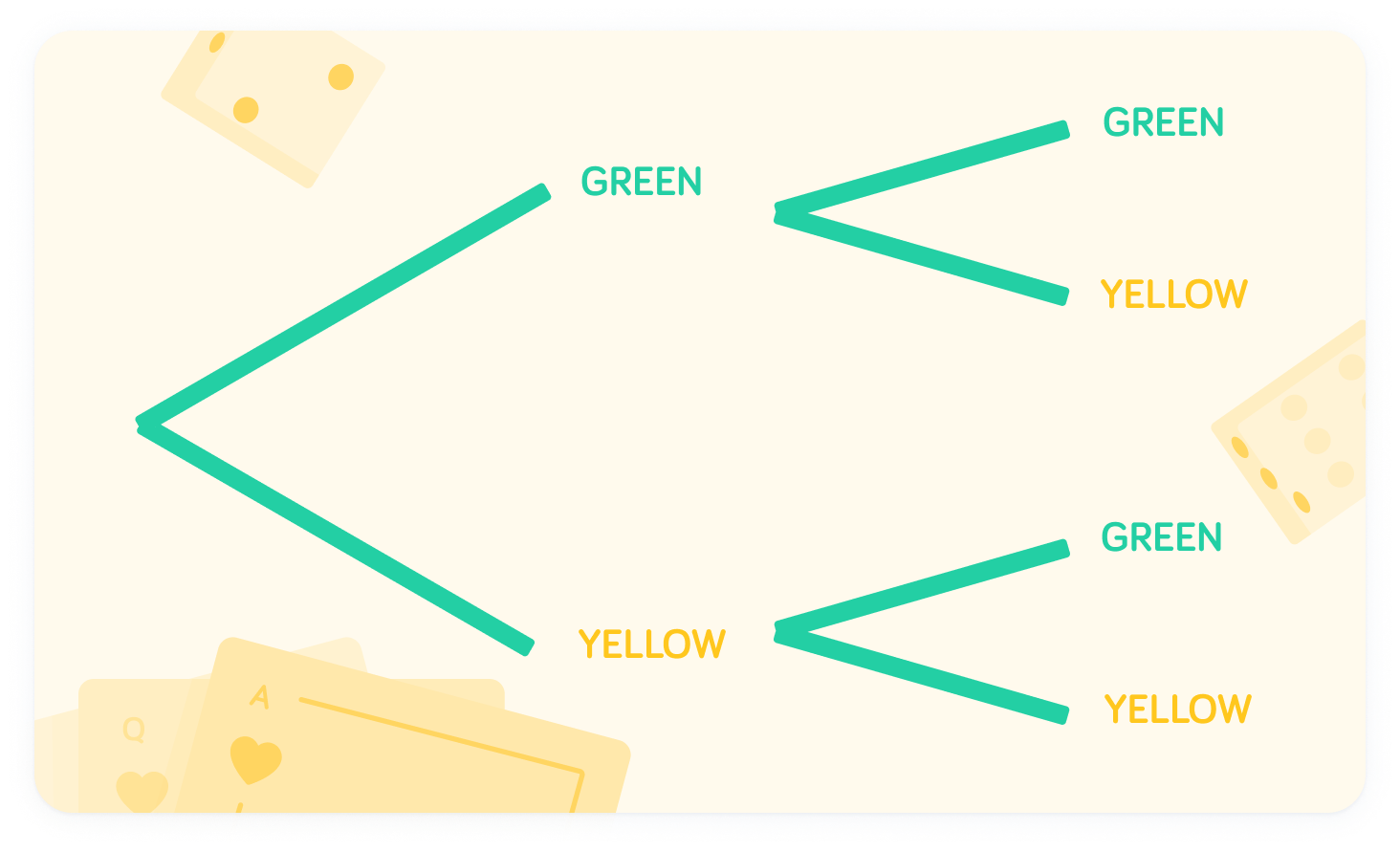
Let's find the probability of picking two balls of the same colour
The total number of green and yellow balls adds up to n

The probability of green is n3
Since there are 3 green balls, we can write that P(Green) =n3.
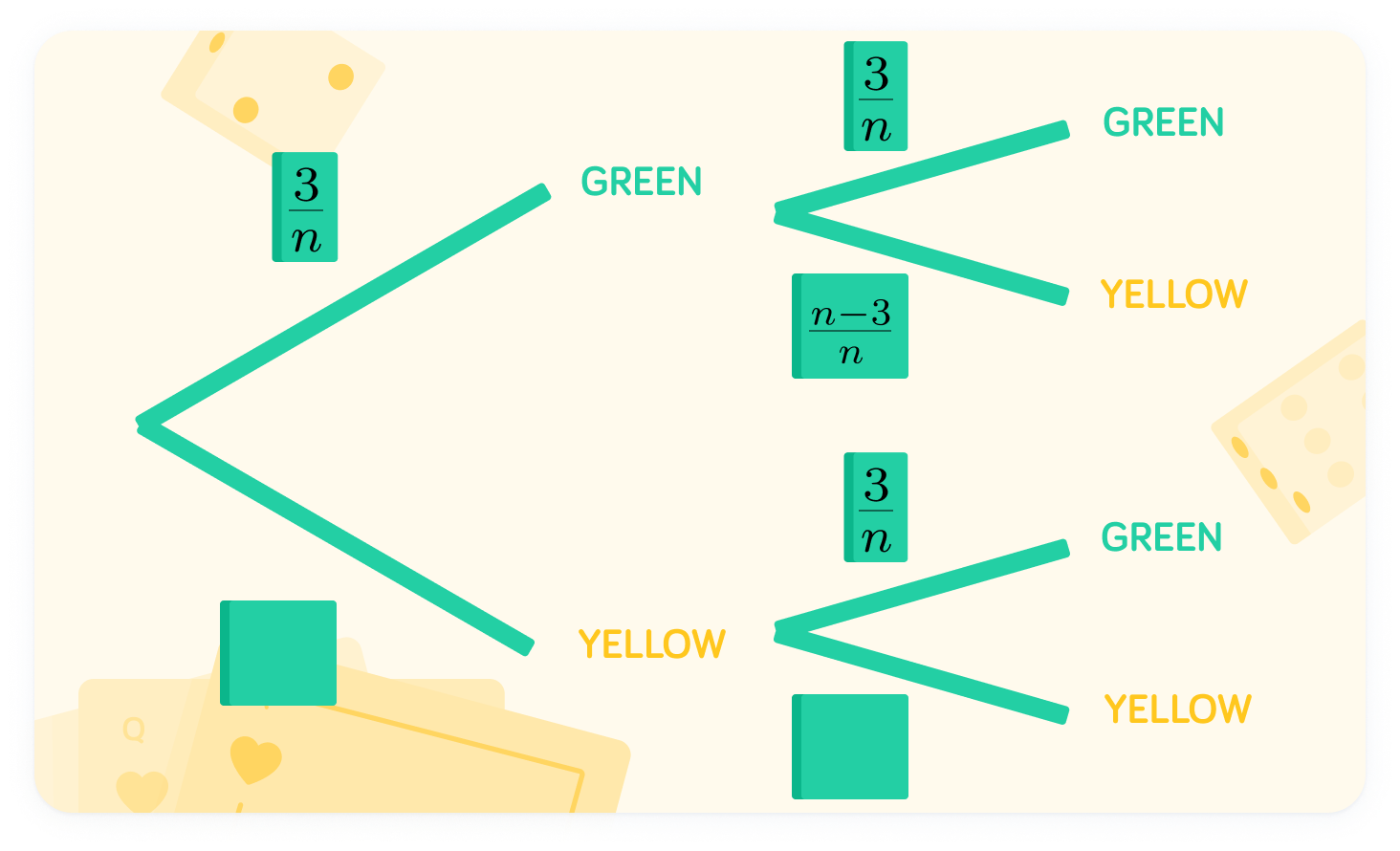
If green is n3, yellow is nn−3
The total of green and yellow must add up to n.
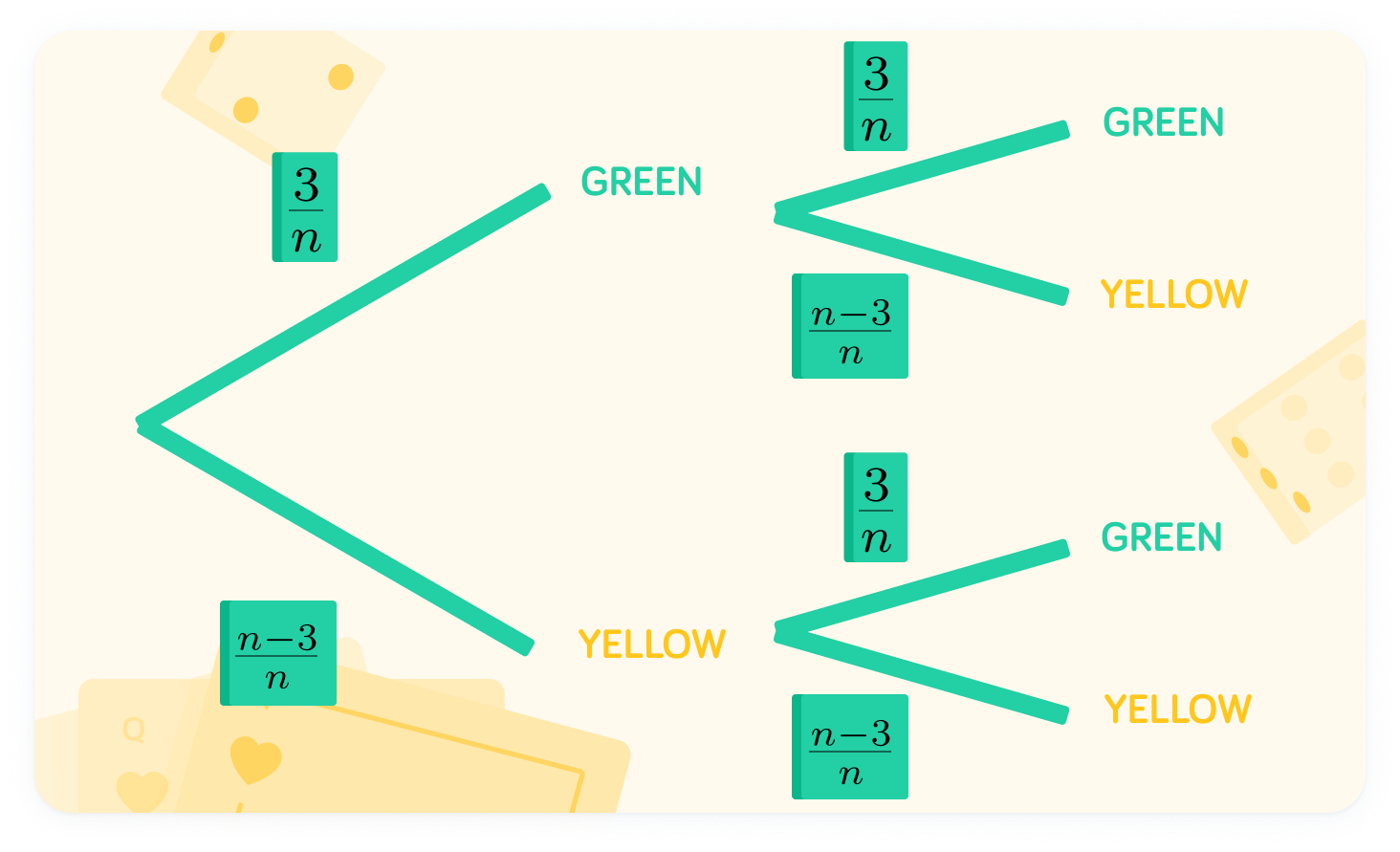
There are two routes to picking two balls of the same colour
The probability of two yellows is n(n−3)×n(n−3)=n2n2−6n+9

What is the probability of picking two green balls?


The probability of two greens is n29
To find this, we multiply the probabilities: n3×n3=n29

To find the probability of picking two of the same colour, add the probabilities
Since there are two routes to picking the same colour twice, we need to use the or rule of probability. Therefore, P(same)=n29+n2n2−6n+9

What is n29+n2n2−6n+9?


Nice!
The probability of the same colour twice is n2(n2−6n+18)

In a box aren sweets and chocolates, with 7 being sweets. How do we notate the amount of chocolates in the box?

Two balls are picked at random from a bag
There are 6 balls in total, with n blue balls. The rest are red. The ball is replaced after the first pick. Given that the probability of picking two blue balls is 61, show that n2−6=0
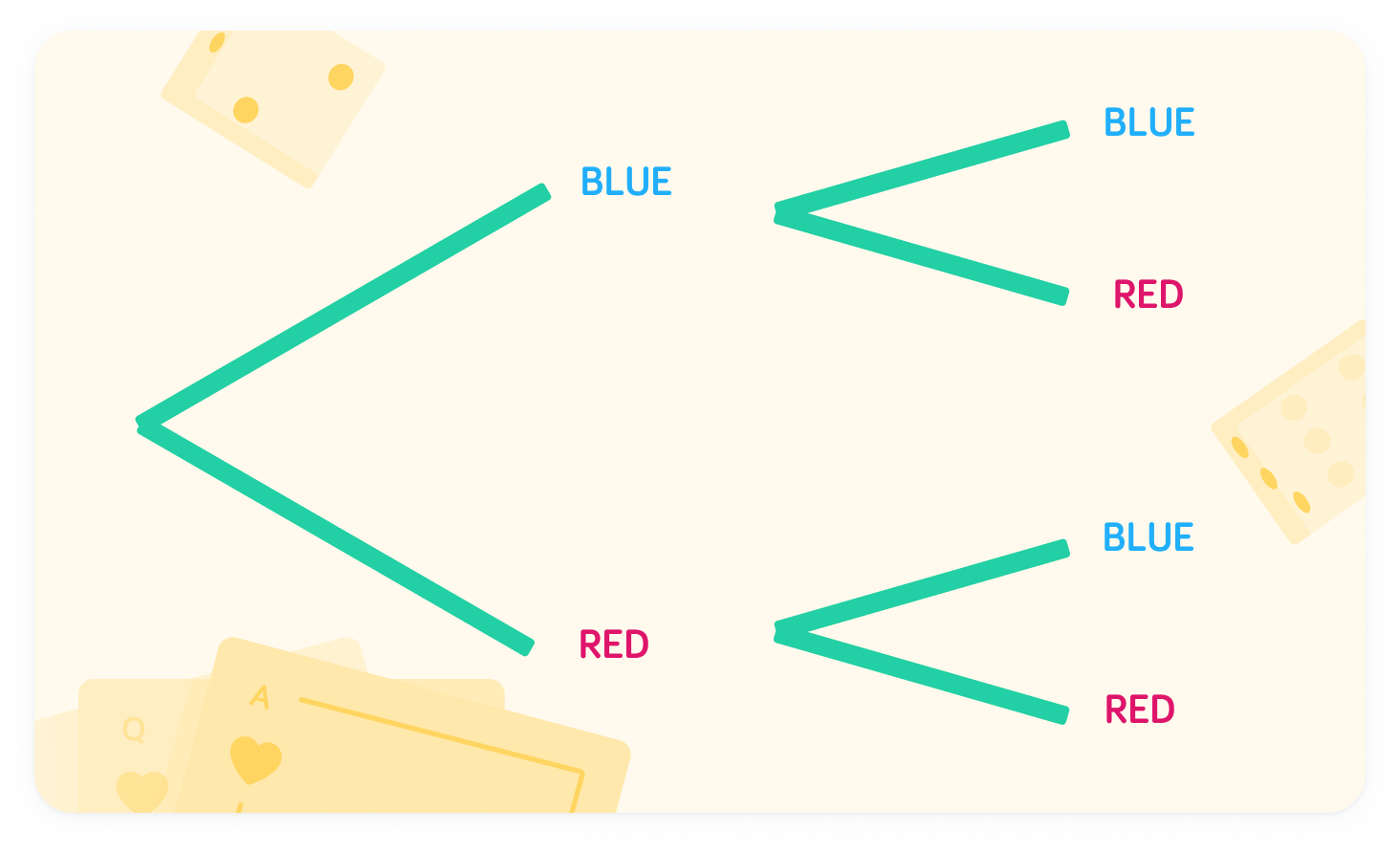
There are n blue balls
Since there are 6 balls in total, the probability of blue is 6n

What is the probability of choosing a red ball?


The probability of red is 66−n
Since there are 6 balls in total, we subtract the number of blue balls, n, from the total.
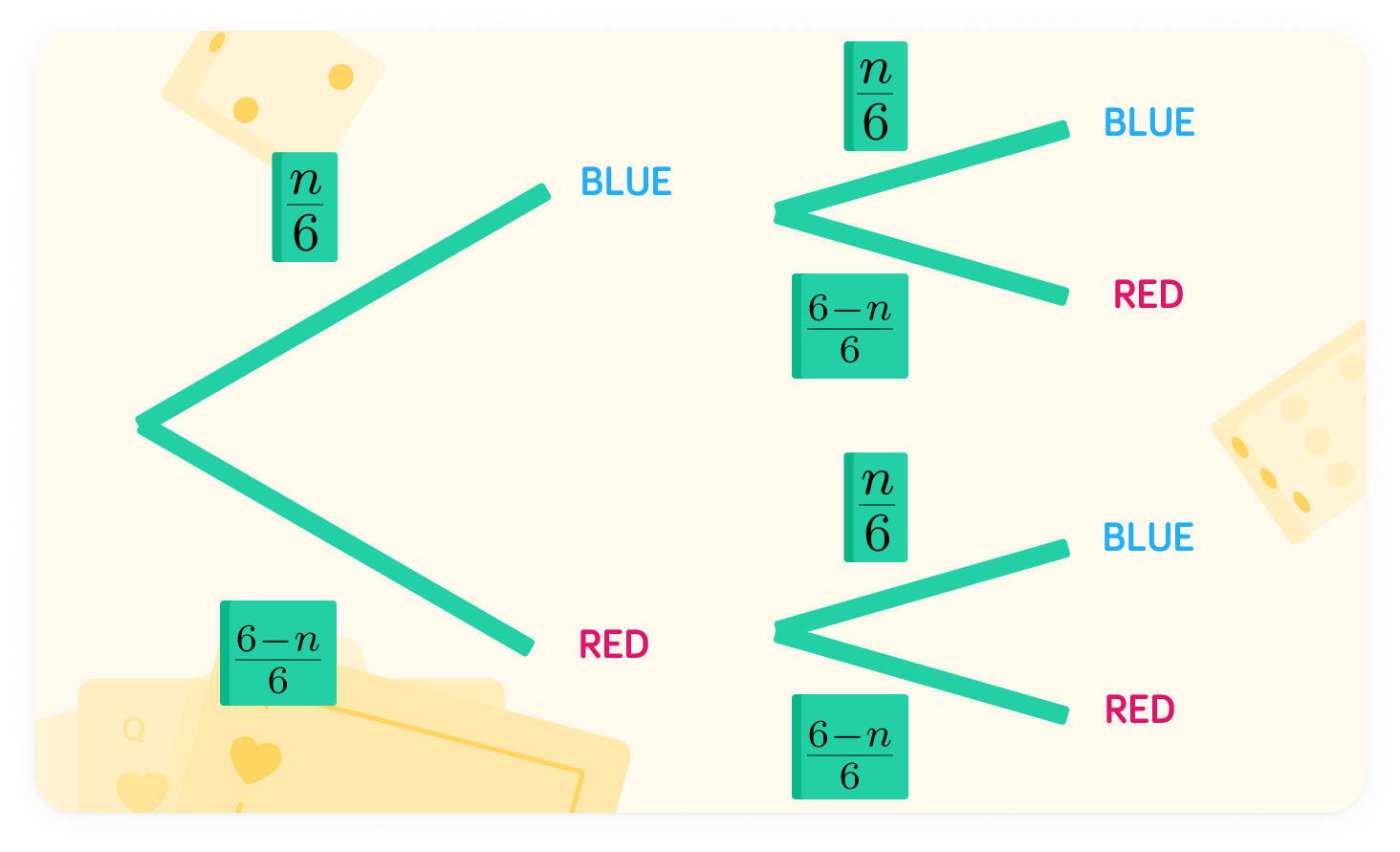
What is the probability of two blue balls, as an expression containing n?


The probability of two blue balls is 36n2
To find this, we multiply the probabilities of each individual blue ball: 6n×36n=36n2

The real probability of two blue balls is 61, as given in the question
Therefore, we can equate these two expressions: 36n2=61.

Rearrange 36n2=61 to make n2 the subject


By rearranging, we find n2=6
To show that n2−6=0, we can subtract 6 from both sides.

Let's try another question with this example
This time, the probability of picking two reds in a row, when the first ball is replaced, is 32

What is the probability of picking two red balls, as an expression involving n?


The probability of two reds is 36n2−12n+36
36(n−6)(n−6)=36n2−12n+36

Equate this to the real probability of two red balls, 32
36n2−12n+36=32. We want to show that n2−12n+12=0

Multiply both sides by 36
36n2−12n+36=32×36 → n2−12n+36=24

Subtract 24 from both sides
n2−12n+12=0

Nice!
This is called a proof.

